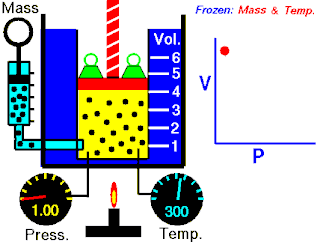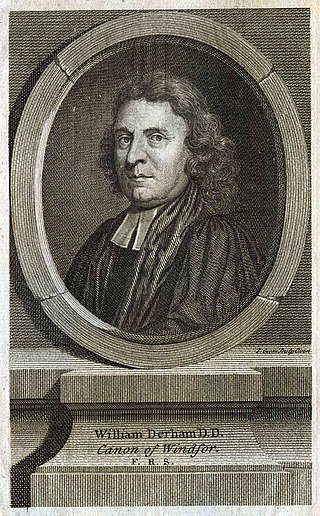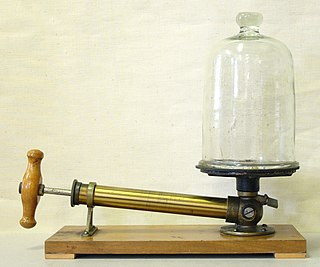Related Research Articles

Blaise Pascal was a French mathematician, physicist, inventor, philosopher, and Catholic writer.

The Scientific Revolution was a series of events that marked the emergence of modern science during the early modern period, when developments in mathematics, physics, astronomy, biology and chemistry transformed the views of society about nature. The Scientific Revolution took place in Europe starting towards the second half of the Renaissance period, with the 1543 Nicolaus Copernicus publication De revolutionibus orbium coelestium often cited as its beginning.

1662 (MDCLXII) was a common year starting on Sunday of the Gregorian calendar and a common year starting on Wednesday of the Julian calendar, the 1662nd year of the Common Era (CE) and Anno Domini (AD) designations, the 662nd year of the 2nd millennium, the 62nd year of the 17th century, and the 3rd year of the 1660s decade. As of the start of 1662, the Gregorian calendar was 10 days ahead of the Julian calendar, which remained in localized use until 1923.
Reproducibility, also known as replicability and repeatability, is a major principle underpinning the scientific method. For the findings of a study to be reproducible means that results obtained by an experiment or an observational study or in a statistical analysis of a data set should be achieved again with a high degree of reliability when the study is replicated. There are different kinds of replication but typically replication studies involve different researchers using the same methodology. Only after one or several such successful replications should a result be recognized as scientific knowledge.

Robert Hooke FRS was an English polymath active as a scientist, natural philosopher and architect, who is credited to be one of two scientists to discover microorganisms in 1665 using a compound microscope that he built himself, the other scientist being Antoni van Leeuwenhoek in 1676. An impoverished scientific inquirer in young adulthood, he found wealth and esteem by performing over half of the architectural surveys after London's great fire of 1666. Hooke was also a member of the Royal Society and since 1662 was its curator of experiments. Hooke was also Professor of Geometry at Gresham College.

Robert Boyle was an Anglo-Irish natural philosopher, chemist, physicist, alchemist and inventor. Boyle is largely regarded today as the first modern chemist, and therefore one of the founders of modern chemistry, and one of the pioneers of modern experimental scientific method. He is best known for Boyle's law, which describes the inversely proportional relationship between the absolute pressure and volume of a gas, if the temperature is kept constant within a closed system. Among his works, The Sceptical Chymist is seen as a cornerstone book in the field of chemistry. He was a devout and pious Anglican and is noted for his writings in theology.

Sir Christopher WrenPRS FRS was one of the most highly acclaimed English architects in history, as well as an anatomist, astronomer, geometer, and mathematician-physicist. He was accorded responsibility for rebuilding 52 churches in the City of London after the Great Fire in 1666, including what is regarded as his masterpiece, St Paul's Cathedral, on Ludgate Hill, completed in 1710.

Boyle's law, also referred to as the Boyle–Mariotte law, or Mariotte's law, is an experimental gas law that describes the relationship between pressure and volume of a confined gas. Boyle's law has been stated as:
The absolute pressure exerted by a given mass of an ideal gas is inversely proportional to the volume it occupies if the temperature and amount of gas remain unchanged within a closed system.

Capillary action is the process of a liquid flowing in a narrow space without the assistance of, or even in opposition to, any external forces like gravity. The effect can be seen in the drawing up of liquids between the hairs of a paint-brush, in a thin tube, in porous materials such as paper and plaster, in some non-porous materials such as sand and liquefied carbon fiber, or in a biological cell. It occurs because of intermolecular forces between the liquid and surrounding solid surfaces. If the diameter of the tube is sufficiently small, then the combination of surface tension and adhesive forces between the liquid and container wall act to propel the liquid.
The year 1660 in science and technology involved some significant events.
The year 1669 in science and technology involved some significant events.

Edme Mariotte was a French physicist and priest (abbé). He is particularly well known for formulating Boyle's law independently of Robert Boyle. Mariotte is also credited with designing the first Newton's cradle.

William Derham FRS was an English clergyman, natural theologian, natural philosopher and scientist. He produced the earliest reasonably accurate measurement of the speed of sound.
Experimental physics is the category of disciplines and sub-disciplines in the field of physics that are concerned with the observation of physical phenomena and experiments. Methods vary from discipline to discipline, from simple experiments and observations, such as Galileo's experiments, to more complicated ones, such as the Large Hadron Collider.

An Experimental Enquiry Concerning the Source of the Heat which is Excited by Friction is a scientific paper by Benjamin Thompson, Count Rumford, which was published in the Philosophical Transactions of the Royal Society in 1798. The paper provided a substantial challenge to established theories of heat, and began the 19th century revolution in thermodynamics.

A bell jar is a glass jar, similar in shape to a bell, and can be manufactured from a variety of materials. Bell jars are often used in laboratories to form and contain a vacuum. It is a common science apparatus used in experiments. Bell jars have a limited ability to create strong vacuums; vacuum chambers are available when higher performance is needed. They have been used to demonstrate the effect of vacuum on sound propagation.
This timeline lists significant discoveries in physics and the laws of nature, including experimental discoveries, theoretical proposals that were confirmed experimentally, and theories that have significantly influenced current thinking in modern physics. Such discoveries are often a multi-step, multi-person process. Multiple discovery sometimes occurs when multiple research groups discover the same phenomenon at about the same time, and scientific priority is often disputed. The listings below include some of the most significant people and ideas by date of publication or experiment.

The Shelley Memorial is a memorial to the English poet Percy Bysshe Shelley (1792–1822) at University College, Oxford, England, the college that he briefly attended and from which he was expelled for writing the 1811 pamphlet "The Necessity of Atheism".
Events from the year 1660 in England. This is the year of Restoration.
Events from the year 1662 in England.
References
- ↑ West, J. B. (October 1999). "The original presentation of Boyle's law". Journal of Applied Physiology. 87 (4): 1543–1545. doi:10.1152/jappl.1999.87.4.1543. ISSN 8750-7587. PMID 10517789.
- ↑ "Robert Hooke". www.ucmp.berkeley.edu. Retrieved 2018-01-28.
- ↑ "Ashmolean Museum: British Archaeology Collections - Rationalisation and Enhancement Project - The Collectors Tradescant". britisharchaeology.ashmus.ox.ac.uk. Archived from the original on 2018-10-06. Retrieved 2018-01-28.
- ↑ "Blaise Pascal | Biography, Facts, & Inventions". Encyclopedia Britannica. Retrieved 2018-01-28.